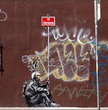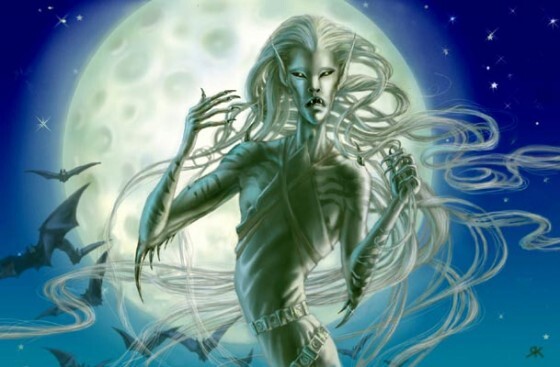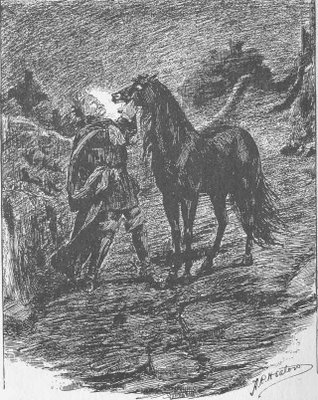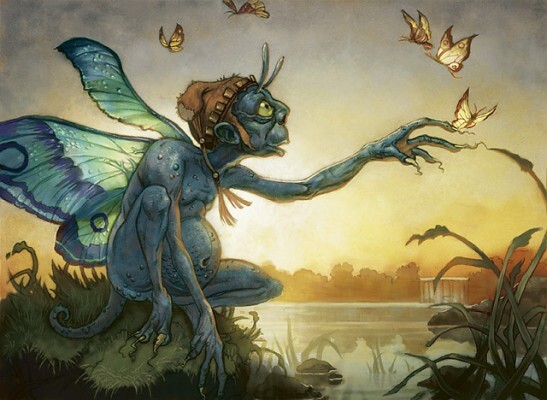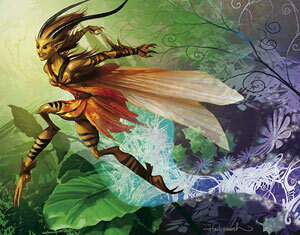-
The culture corner

Tout au long de l'année nous allons parcourir le monde anglo-saxon. L'occasion de voyager ou de découvrir des traditions venues d'ailleurs.
-
-
Par Alice Armandi le 3 Février 2016 à 09:50
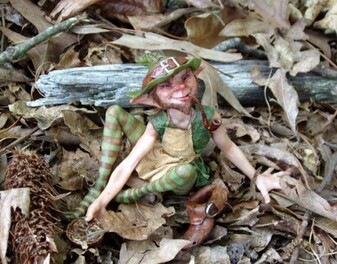
The leprechaun is the most famous fairy living in Ireland. Leprechauns started appearing in Irish legend in the medieval times. Traditionally, leprechauns are tall fairies and often appear to humans as an old man – much different from the modern view of a small, childlike fairy in a green suit. Leprechauns are different from traditionnal fairies because they have got jobs : the make shoes for Irish poor people. As legend holds, Leprechauns love to collect gold, which they store in a pot and hide at the end of a rainbow. If a human catches a leprechaun, the fairy must grant the human three-wishes before he can be released.
 votre commentaire
votre commentaire
-
Par Alice Armandi le 13 Janvier 2016 à 18:58
Ireland is an ancient country where mythology has always played an important role. In the ancient time, druids and the celtic people believed in the power of magic. In modern Ireland, the power of ancient legends are still present.
10. The Banshee
The Banshee was a woman who carried with her an omen of death. Sometimes you saw the Banshee as an old woman dressed in rags, sometimes you saw her as a young and beautiful girl and sometimes you saw her as a wash woman, ringing out bloody clothing. Whenever she was seen, she let out a horrible cry and legend has it this cry brought death to any family that heard it. King James I of Scotland thought he was approached by a Banshee. Shortly after, he died at the Earl of Atholl.
9. Pookas
The Pookas were terrible fairies causing destruction in the mortal world. The Pooka appeared at night across rural Ireland and the seaboard. On a good day, Pookas caused destruction on a farm- breaking fences and disrupting the animals. On a bad day, Pookas stood outside the farmhouse and called the people outside by name. If anyone came out, the Pooka carried them away. The Pookas also loved to mess with the ships pulling sailing away from Ireland, and the Pookas were responsible for many shipwrecks along the rocky coast.
8. Changelings
According to the legend female fairies often gave birth to deformed children. But the fairies prefered beautiful babies. So, they went into the mortal world and swapped their ugly babies with healthy human babies, leaving behind a changeling. While the changeling looked like a human baby, it carried none of the same emotional characteristics. The changeling was only happy when problems or sadness happened in the house.
7. Dagda’s Harp
In Irish mythology, the Dagda was a high priest who had a large and beautiful harp. During a war, a rival tribe stole Dagda’s harp and took it to an abandoned castle. Dagda followed the tribe and called to the harp. The harp came to Dagda and he struck the chords. The harp let out the Music of Tears and everyone in the castle began to cry. Dagda struck the chords again and the harp played the Music of Mirth and all the warriors began to laugh. Then, Dagda struck the chords a final time and the harp let out the Music of Sleep. Everyone but Dagda fell into a deep sleep, allowing him to escape with his magical harp unharmed.
6. The Children of Lir
Lir was the lord of the sea. He had a wife and four children. When Lir’s wife died, he married his wife’s sister, Aoife. Aoife was jealous of Lir’s children and wanted to get rid of them. One day Aoife took the children to a lake. While they were swimming she performed a spell on them and turned them into swans. Under the spell the children were to be swans until they heard the sound of a Christian bell. The swans swam from lake, to river to stream for years waiting for the sound of that bell, but it wasn’t until St. Patrick came to Ireland that the children could be free of the curse- 900 years later.
5. St. Patrick
St. Patrick was born in Britain to a wealthy family. During his childhood, he was kidnapped and sold into slavery in Ireland. During his years in slavery he converted to Christianity and once freed he spent the rest of his life teaching the Irish about the Christian religion. It wasn’t until many years after his death that monks began telling the tale of St. Patrick forcing all the snakes out of Ireland. Something he never could have done as there never were any snakes in Ireland.
4. The Shamrock
The Druids believed the Shamrock was a sacred plant that could ward off evil. The Celtics believed the Shamrock had mystical properties due to the plant’s three heart-shaped leaves. The Celtics believed three was a sacred number. Some Christians also believed the Shamrock had special meaning- the three leaves representing the Holy Trinity.
3. Finn MacCool
Finn MacCool is a mythological warrior (= guerrier) who appears in several Irish legends. read one of these stories:
One day, Finn MacCool meets a salmon. It is a very special one who knows everything (the fish has all of the world’s knowledge(= connaissances) . Finn decides to eat the Salmon because he wants to have all the knowledge too, so he . While he is cooking the fish, some juice comes out and burns Finn’s finger. Finn puts his finger in his mouth to stop the pain and instantly becomes clever. Does he eat the salmon? The legend doesn't tell...
2. Faeries
An Irish fairy can take any form she wishes, but will usually choose a human form. They are said to be beautiful, powerful and hard to resist, which is unfortunate because most fairies in Ireland love to bring misfortune and bad luck to the mortals who come near them.
1. Leprechauns
The leprechaun is likely the most widely known type of fairy living in Ireland. Leprechauns have been in existence in Irish legend since the medieval times. Traditionally, leprechauns are tall fairies and often appear to humans as an old man – much different from the modern view of a small, childlike fairy in a green suit. As legend holds, Leprechauns love to collect gold, which they store in a pot and hide at the end of a rainbow. If a human catches a leprechaun, the fairy must grant the human three-wishes before he can be released.
-
Par Alice Armandi le 13 Janvier 2016 à 12:03

In Grafton Street in Dublin, you can see the statue of Molly Mallone. The statue was dedicated by the Lord Mayor of Dublin in 1987 during the Dublin Millennium celebrations. It was the 13th of June and this day became Molly Malone day.
“Molly Malone” is a popular song set in Dublin, which has also become the unofficial anthem of Dublin. Bono, from the Irish group U2, sang "Molly Mallone" live in a concert in 2001.
You can listen to an easier version here
 3 commentaires
3 commentaires
-
-
Par Alice Armandi le 26 Novembre 2015 à 16:50
Today is Thanksgiving in the USA. There is a tradition : the president pardons a turkey...
(une étrange tradition, où le président des USA accorde sa grâce à une dinde qui ne sera pas mangée pour Thanksgiving!)
Watch and enjoy!
Aux élèves d'anglais + : vous voyez je ne vous ai pas menti!
 votre commentaire
votre commentaire
-
Par Alice Armandi le 3 Septembre 2015 à 13:13
Première étape : sur la côte Ouest des USA en Californie
2 little questions :
What wuld you like to see in San Francisco?
Where can you have a great view over San Francisco ?
 13 commentaires
13 commentaires Suivre le flux RSS des articles de cette rubrique
Suivre le flux RSS des articles de cette rubrique







